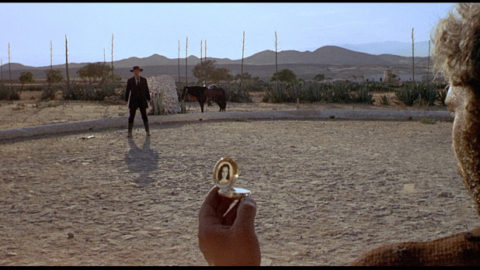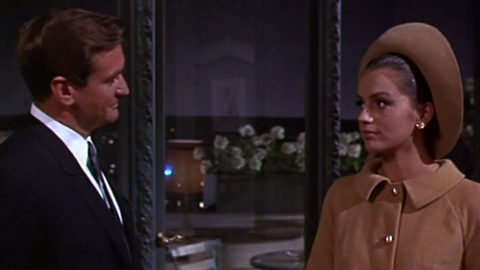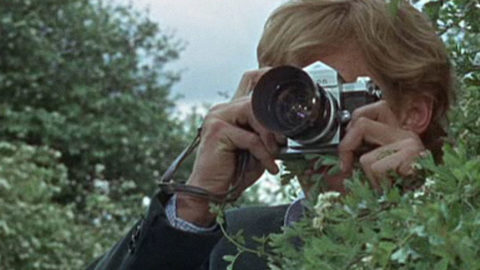Cinema ’67 Revisited: A Countess from Hong Kong
In my 2008 book Pictures at a Revolution, I approached the dramatic changes in movie culture in the 1960s through the development, production, and reception of each of the five nominees for 1967’s Best Picture Academy Award: Bonnie and Clyde, The Graduate, In the Heat of the Night, Guess Who’s Coming to Dinner, and Doctor Dolittle. In this biweekly column, I’m revisiting 1967 from a different angle. As the masterpieces, pathbreakers, and oddities of that landmark year reach their golden anniversaries, I’ll try to offer a sense of what it might have felt like to be an avid moviegoer 50 years ago, discovering these films as they opened.
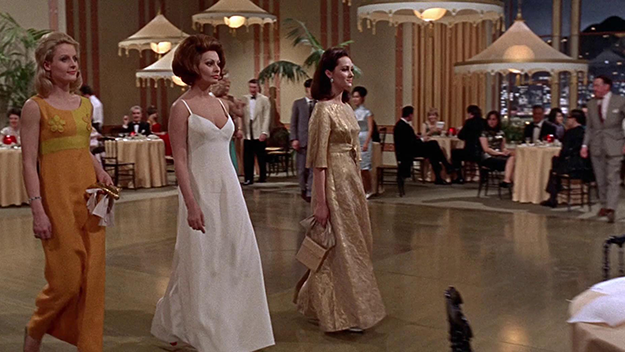
Because 1967 is now fondly recalled as the beginning of what came to be known as the New Hollywood, it’s easy to forget the harshness with which critics and audiences delivered the message “Out with the old.” That year, it hit nobody harder than Charlie Chaplin. When A Countess from Hong Kong opened in New York 50 years ago this week, reviews ranged from dismissive to savage. “Time to Retire,” snapped the headline in Time magazine. The New Yorker took just one paragraph to swat the film away, with critic Brendan Gill calling it “the nadir of one of the greatest figures in movie history.” And in the New York Times, Bosley Crowther said he wished he could “draw the curtain fast on this embarrassment and pretend it never occurred. But that cannot be. We have to face it…the dismal truth is that it is awful.” Even the Village Voice’s Andrew Sarris, steadfast in auteurist appreciation of one of his pantheon directors, could muster only a halfhearted defense, calling the film “far from Chaplin’s past peaks.”
Over the last half century, critics have occasionally returned to Chaplin’s swan song hoping to discover a maligned masterpiece, only to report back, with various degrees of candor, that Crowther was right: it is indeed awful. But its history can, at least, shed some light on how and why one of the century’s greatest artists took such a tumble.
At the time A Countess from Hong Kong opened, American moviegoers had not seen a new movie from the master in fifteen years, since the box-office disappointment of Limelight. As the 1960s began, Chaplin was still exiled, still in eclipse, and, he told the Times, “still bitter”; the only movie he had directed since Limelight, 1957’s A King in New York, had not even been released in the United States. But by the middle of the decade, cinephilia was beginning to grow among younger American moviegoers, with a particular focus on silent comedy; a Laurel and Hardy retrospective had done surprisingly robust theatrical business around the country, and in 1964, Chaplin’s 1947 film Monsieur Verdoux had been revived in New York to newly appreciative reviews. The time seemed right for a creative return.

Chaplin had toyed with the idea of reviving his Little Tramp character for years, but when he held a London press conference in November 1965 to announce that he would, at 76, start production on a new film in two months, he revealed that this time he would not act in it. Instead, he had secured two of the world’s biggest stars, Marlon Brando and Sophia Loren, to play the leads in a script he had written 25 years earlier under the title Stowaway as a vehicle for himself and his wife Paulette Goddard. It was to be a shipboard romantic comedy in which Brando would play an about-to-be-divorced ambassador and Loren a refugee Russian aristocrat hiding in his cabin. Chaplin had seen Loren in the comedy Yesterday, Today and Tomorrow and had been captivated by her. She wasn’t the problem; it was the lethal combination of a director in his late twilight and a male lead deep into his pre-Godfather period of obstinacy.
Brando was coming off of a string of duds and, according to biographer Peter Manso, was unhappily working off a multi-picture contract with Universal (which made Countess). Although he had signed on to work with Chaplin enthusiastically, once he got to the set, Brando wrote in his autobiography, he encountered, in his director, “a fearsomely cruel man…I told him I didn’t believe I was right for it…I’ve always been leery of comedies, but…I agreed to be a marionette in his hands. I figured he must know something I didn’t.”
Accounts vary as to exactly how Chaplin and Brando drove each other crazy, but there’s no disputing that they were a terrible match. Chaplin, according to one journalist, would act out each scene himself and then tell Brando to just imitate him; he was angry that Brando had not kept his promise to lose weight for the role and more than once exploded at his inability to get his star to do his bidding. According to Chaplin biographer David Robinson, at one point Gloria Swanson visited the set and remarked to film historian Kevin Brownlow, “Did you notice that he isn’t as articulate with words as he is in pantomime, while showing people what he wants?”

Loren was no happier with her costar, whose vulgarity and aggression offended her (“Do you know you have black hairs growing out of your nose?” he asked her tauntingly after their first kissing scene). At least once, Brando threatened to walk off the movie, but he managed to muster a show of diplomacy when the Times came to visit. “I’ve never known anyone with such a sense of detail,” Brando told a reporter, choosing his words carefully. “I just do what he tells me to do.” For his part, Chaplin insisted all was well, although he didn’t do much to conceal his working methods: “I’m acting all the time,” he said. “Through them.” (This was a preview of the dubious assertion that Sarris would make in The American Cinema a year later that “the continuity of [Chaplin’s] career…even in the absence of his acting persona…proves that in the cinema feelings are expressed through actors, not by them.”)
Watching A Countess from Hong Kong now, the agony that went into its production is palpable; it’s all text, not subtext. By the mid-1960s, the last few holdouts in Hollywood—Richard Brooks and Billy Wilder among them—were making their peace with having to shoot in color, and the look of this film is exactly what they feared most. Chaplin was working for the first time not just in color, but in the flat, washed-out, overlit color that was a hallmark of Universal movies and TV shows of the time; visually, there’s very little difference between Countess and a ‘60s sitcom. The shooting is static, the backdrops are unadorned, and Brando seems miserable in a role that feels more suited for Cary Grant, David Niven, or even Rock Hudson. But mainly, what’s evident is how little interest Chaplin had by that point in directing actors. He has Loren and Brando stare straight ahead, blankly, when they’re being spoken to, so frequently that they indeed seem like marionettes, each expressionless and inert until it’s their turn to do something. Twenty-five years earlier, Countess might have worked as a tossed-off lark; ten years later, another director might have tried it as a period pastiche. But this is neither, just a comedy without laughs and a romance without chemistry—and the screwball style for which Chaplin was aiming was at the nadir of its appeal in 1967, when other filmmakers were pushing the boundaries of what was permissible, and audiences could not have been less interested in paying to watch two huge stars not have sex.
Just two moments of A Countess from Hong Kong are affecting. One is the opening credit, an unusual title card that reads, “An Original Screenplay Written and Directed By Charles Chaplin,” a phrasing so archaic it seems to have time-traveled forward from his 1914 debut behind the camera. The other is the very brief appearance of Chaplin himself, as an ancient, slightly seasick steward. He waited until production was almost over to give himself a cameo, and his delight in being on camera, if only for a few seconds, is evident. It would be his final appearance in a movie, and he would always be bewildered by what he saw as the cruelty of the reviews. “They seemed so personal, an attack on me!” he told an interviewer. “All they were interested in was ‘Chaplin has a flop.’”
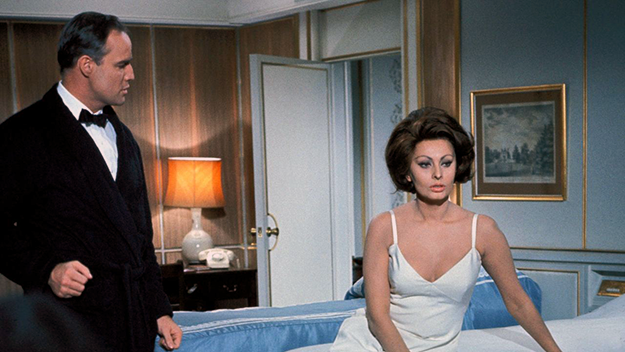
In 1967, Chaplin was a man out of time. He went on to say he found Blow-Up “boring,” Doctor Zhivago “banal,” and Beatles movies old-hat: “We did all this stop-action business in 1914…and nobody paid much attention.” He would never act or direct again, but five years later, he would at last return to the United States to receive an honorary Academy Award. The ovation that greeted him—still the longest in the history of the Oscars—was a make-good for many perceived sins, and a chance to give Chaplin a proper send-off five years after this brutal career termination.
How to see it: A Countess from Hong Kong is available on DVD and as a Blu-ray import.
Mark Harris is the author of Pictures at a Revolution: Five Movies and the Birth of the New Hollywood (2008) and Five Came Back (2014).




